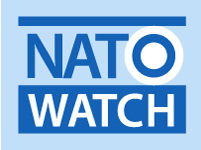31 December 2023
Overview
At the end of 2023 the leaders of Ukraine and Russia struck a defiant tone and vowed to reach their military goals as the war headed towards its third year. Speaking in Kyiv during a press conference on 19 December, President Zelensky sought to improve the domestic mood and maintain western support that had been faltering in recent weeks. Kyiv’s two biggest allies, the United States and the EU, failed to approve two separate support packages. The EU, however, delivered a political boost by agreeing on 14 December to open formal membership talks with Ukraine.
“I am certain US and European financial support will continue,” Zelensky said. “I’m confident the US won’t betray us”. Meanwhile, in Moscow, President Putin told defence officials that in Ukraine he would “not give up what is ours”, while claiming the Russian military had momentum. “Our troops are holding the initiative,” Putin said, during the end-of-year meeting with his defence leadership. “We are effectively doing what we think is needed, doing what we want”.
Russian and Ukrainian military officials both reported downing enemy aircraft over the Christmas period. President Zelensky warned Russian pilots that Ukraine’s air defence will “only get stronger” after Ukraine said it shot down five Russian combat aircraft in the days before Christmas, including three Russian Su-34 fighter-bomber aircraft on the southern front on 22 December, probably by US-supplied Patriot missiles. “In just one evening yesterday, our warriors shot down almost 30 Shahed drones, a few missiles, and two military aircraft. Five in a week. I am grateful to everyone who ensured such a powerful result”, he said in his Christmas message. Meanwhile, Russia’s Defence Ministry said earlier that its air defence systems had shot down four Ukrainian military aircraft: three Su-27 fighter aircraft and one Su-24 tactical bomber in the Zaporizhzhia and Dnipropetrovsk regions of southeastern Ukraine.
Overall, however, the two sides have largely fallen into an operational deadlock. The Ukrainian summer-autumn counteroffensive failed to regain much ground, while the Russians also lack the ability to launch a large-scale offensive. Local battles of a tactical nature are being fought along the entire 1,000km frontline, with little chance of a breakthrough. In this grinding war of attrition, casualties, destruction and collateral damage have reached proportions not seen in Europe since World War II. Despite the bloody stalemate and a growing war weariness, diplomacy to end the war remains stalled.
Read more in the attached pdf
Contents:
Overview
Ukraine on the back foot despite huge Russian losses
Russian attacks on civilian infrastructure
Ukrainian attacks inside Russia and in Crimea
Ukrainian mobilisation reforms
Christmas moved
Stalled diplomacy
Military and financial assistance to Ukraine and Russia
Humanitarian and environmental consequences of the war
Further reading:
On outcomes and consequences of the war
On the risk of nuclear war
On investigation of war crimes in Ukraine
On the Black Sea grain agreement and global food security
On sanctions against Russia and post-war reconstruction in Ukraine
On energy security in Europe (and the Nord Stream attack)
On China’s position on the war
On developments within Russia
On Ukraine’s NATO and EU membership applications and other developments
| Attachment | Size |
|---|---|
| nato_watch_update_54.pdf | 640.11 KB |
